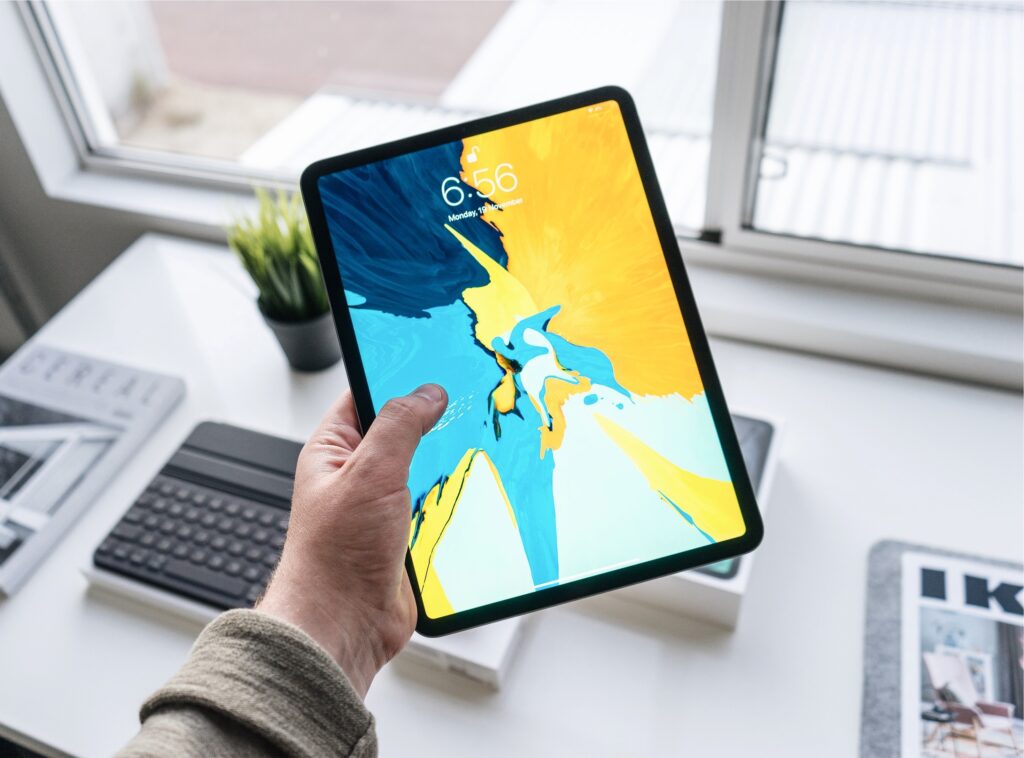Digital literacy isn’t just for pre-teens and college students. Older adults need to be brought into the fold to cultivate digital inclusion and empower folks as they enter their golden years.
A strong grasp of high-tech devices can help aging adults stay independent for longer and may improve retiree’s quality of life. Even simple changes, like installing Amazon’s smart technology, can improve mobility, increase self-sufficiency, and ensure folks can get the help they need should they slip or fall.
Increased access to digital devices can reduce loneliness and help older adults find communities that give them a sense of purpose. This is particularly important today, as more than a third of older adults report feeling lonely, which may hasten the onset of dementia by 50%.
Tech for Older Adults
Most older adults may not care much for TikTok or video games, but many would benefit tremendously from increased use of technology. There are many ways older adults can use technology, including:
- Online Banking: Most retirees choose to downsize as their income is reduced after they finish working. Banking apps can keep track of spending and help create budgets for personal expenses.
- Health Coverage: Health insurance can be expensive in later life. Digital tools can help folks track their Medicare benefits and find more in-network providers.
- Smart Speakers: Smart speakers like Amazon’s Alexa, Apple’s Siri, and Google Assistant can remind folks to take pills, tell them the news, and play music. They can also dial 911 in an emergency and help folks stay connected with their support network.
- GPS Tracking: GPS devices can track items and help folks find important items like keys and wallets. This is particularly important for aging adults who are starting to experience the onset of Alzheimer’s.
Finding the right app doesn’t take long, either. Older adults can lean on tech stacks that come with the devices they buy. This means folks are directed towards the right app to partner with their phone, tablet, or laptop as soon as they start using their new device.
Older adults can also use technology to combat isolation. Social media platforms like Facebook, Reddit, and YouTube host an array of communities and forums that can help older adults connect with folks who share their interests. Some older adults can even consider playing video games online, as games like No Man’s Sky, Minecraft, and Deeprock Galactic host thousands of friendly communities.
Telemedicine
Older adults tend to have more health conditions than younger individuals. Unfortunately, many of these conditions need constant monitoring that requires regular visits to the doctor’s office. This can eat away at older folks’ free time and put a strain on their family or caregivers.
Tech-based telemedicine appointments can make managing healthcare that much easier by cutting down on physical appointments and can improve patient access as a result. Telehealth can also be used to monitor conditions in real-time as many smart devices are capable of monitoring metrics like heart rate, blood pressure, and movement.
Older adults can prepare for a telemedicine appointment by:
- Find a quiet, secluded place where they can speak in privacy
- Prepare a well-lit space with a camera at eye level
- Test audio-visual tools to ensure they aren’t accidentally muted
- Prepare a list of questions and keep medication at hand so physicians can see it
Telemedicine appointments are conducted from the safety and comfort of the patient’s home but still require the same rules of decorum and politeness. Patients should refrain from eating or drinking during the appointment and should take notes just as though they were at an in-person appointment.
Digital Security
Aging adults can use technology to improve their quality of life, connect with new friends, and keep up with their doctor’s appointments. However, life online does come with some risks that older folks should be aware of.
Older adults can improve their online security by following cybersecurity best practices like:
- Passwords: Never repeat passwords, and use strong, memorable phrases to build difficult-to-guess passwords.
- Two-factor authentication: Signing up for two-factor authentication can be a hassle but is well worth the effort. It will keep hackers out of accounts should they guess the password and give users time to update their security preferences.
- Updates: Updates for PCs, phones, and tablets are designed to fix patches and firm up security loopholes. Start updates as soon as they are available or set the device to update automatically.
- Personal Information: Scammers are adept at building relationships that prey on vulnerable older people. Never give out identifying information, and keep details like address, phone number, and social security number private.
Aging adults are regularly targeted by malicious actors who seek out vulnerable adults. As such, older folks should be hyper-vigilant when online to avoid common attacks like romance scams and blackmail.
Conclusion
Increasing digital inclusion can improve healthcare and help aging adults connect with vibrant digital communities. Smart devices can keep older folks safe, too, as watches and speakers can track biometrics and help users get help in an emergency. Older adults do need to be made aware of cybersecurity threats, though, as malicious actors typically target aging web users who may not be as internet-savvy.




Comments are closed.